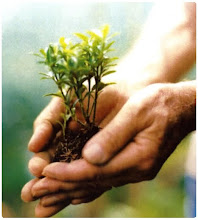Pasona O2 is a project located in the heart of the busy downtown business district of Tokyo,Japan. Even though it is not a commercial crop industry, it has highlighted the technology and ability to create farm production within the urban environment. Pasona O2 project has reclaimed the vault space in the basement of a former bank and has turned it into a underground farm environment. It is an area spanning a space of about 1,000 square meters and comprised of six rooms that grow rice, tomatoes, herbs, vegetables, lettuce and flowers . The facility showcases the different concepts and technologies that are being used to grow food produce in a controlled indoor environment. Light-emitting diodes (LED), metal halide lamps, and high-pressure sodium vapor lamps, hydroponics, and temperature management regulate how the crops are grown.
Its location within a dense urban centre was formed with the idea of also providing agriculture training to young people having trouble finding work and middle-aged people looking for a second career. It is a place for people to come and learn about growing techniques and practices, with the hope that they will be able to take the ideas home and apply them to their own gardening practices.
 Sweet Water Organics is a similar project that is situated in the city of Milwaukee, Wisconsin. Once an abandoned factory space and slum, the project's organisers have transformed the interior of the factory into a fully functional urban farm. Not only are they growing vegetables, but they are showing that it is capable of farming fish in the same complex, this is done by a aquaculture system, a three-tiered, aquaponic, bio-intensive fish-vegetable garden. A cycle is created between the plants and the fish, as water used from the tanks is filtered back through the tiers of plants naturally fertilizing them.The water slowy makes its way back down into the tanks completing the cycle. The transformation of this site has allowed for local food, such as a variety of vegetables along with perch and tilapia fish, to be produced and sold to the immediate consumers in the area. This helps to reduce the cost of the food, and because of its farm-like nature it has produced food in a controlled all year round place that can continuously produce.
Sweet Water Organics is a similar project that is situated in the city of Milwaukee, Wisconsin. Once an abandoned factory space and slum, the project's organisers have transformed the interior of the factory into a fully functional urban farm. Not only are they growing vegetables, but they are showing that it is capable of farming fish in the same complex, this is done by a aquaculture system, a three-tiered, aquaponic, bio-intensive fish-vegetable garden. A cycle is created between the plants and the fish, as water used from the tanks is filtered back through the tiers of plants naturally fertilizing them.The water slowy makes its way back down into the tanks completing the cycle. The transformation of this site has allowed for local food, such as a variety of vegetables along with perch and tilapia fish, to be produced and sold to the immediate consumers in the area. This helps to reduce the cost of the food, and because of its farm-like nature it has produced food in a controlled all year round place that can continuously produce.Image and Video Source: http://haas414.wordpress.com/2009/07/31/abandoned-milwaukeea-factory-becomes-a-fish-farm/
These two projects showcase that it is possible to take existing space and redevelop it to benefit the agriculture presence within the urban environment. Components from projects like this can be adapted to help with growing food needs in developed and developing countries and could lead to the creation of new developments for urban farm designs such as vertical farming.
Stefan Berry
References:
- "Pasona O2; Tokyo's Underground Farm" December 12, 2008.
- "Sweet Water Organics" September 10, 2009.
- "Abandoned Milwaukee Factory Becomes a Fish Farm" July 31, 2009
http://haas414.wordpress.com/2009/07/31/abandoned-milwaukeea-factory-becomes-a-fish-farm/ (accessed November 2, 2009)
- "Sweet Water Organics" 2009
- "Pasona O2: Urban Underground Farm" May 24, 2008
-"Water and Urban Agriculture" 2009





No comments:
Post a Comment